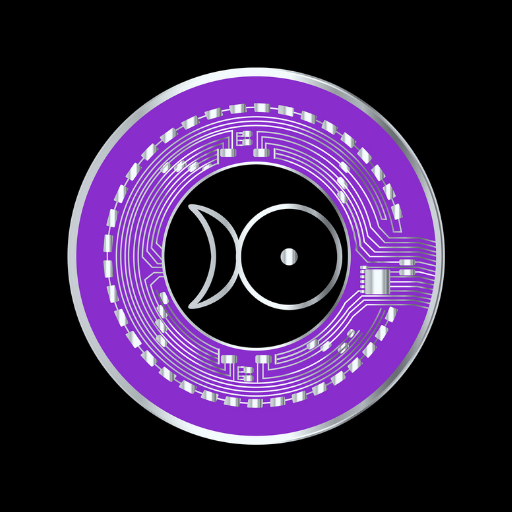Discover how Chainlink’s customizable oracle networks and CCIP protocol are enabling regulatory-ready blockchain systems for banks, fintech, and enterprises.
As global regulators tighten their focus on digital assets, one blockchain project is quietly positioning itself as the institutional bridge between decentralized innovation and traditional finance: Chainlink.
At the Payments Innovation Conference, Chainlink co-founder Sergey Nazarov highlighted how the company’s oracle networks can be customized to meet compliance, risk, and operational requirements — even for highly regulated entities like the Federal Reserve.
“Entities like the Fed can build systems that align with their specific compliance, risk, and operational needs.”
— Sergey Nazarov (AInvest & COINOTAG News coverage)
This marks a pivotal step toward regulatory-ready blockchain infrastructure, where compliance is not a barrier but an integrated design principle.
The Four Compliance Pillars of Chainlink’s Enterprise Architecture
Chainlink’s enterprise documentation defines four foundational pillars that make its decentralized oracle networks (DONs) enterprise-ready:
- Data Integrity – ensuring verified, tamper-proof data for on-chain execution.
- Interoperability – connecting private and public blockchains seamlessly.
- Compliance – allowing institutions to enforce jurisdictional policies and regulatory standards.
- Privacy – enabling selective data disclosure with verifiable proofs.
By acting as middleware, Chainlink’s oracles connect banks, payment networks, and decentralized applications while enforcing jurisdictional controls and internal compliance rules.
(Source: pages.chain.link)
Chainlink CCIP: The Risk-Managed Cross-Chain Protocol
Chainlink’s Cross-Chain Interoperability Protocol (CCIP) adds a compliance-centric layer known as the Risk Management Network. This layer monitors cross-chain activity, validates transactions, and enforces predefined compliance rules — a first in blockchain interoperability.
Institutions can use CCIP to:
- Set transactional limits by region or counterparty
- Apply sanctions-screening logic
- Create real-time audit trails
- Automate approval and rollback mechanisms
This design aligns with financial standards under FinCEN, SEC, and EU MiCA, proving that DeFi infrastructure can meet regulatory scrutiny while maintaining decentralization.
(Source: Chainlink CCIP documentation, pages.chain.link)
Balancing Transparency and Privacy
Chainlink’s enterprise architecture introduces two key tools for privacy compliance:
- Blockchain Privacy Manager – manages sensitive off-chain data with verifiable on-chain proofs.
- CCIP Private Transactions – allows encrypted transaction routing that satisfies jurisdictional data requirements.
This hybrid blockchain model ensures that compliance, auditability, and confidentiality can coexist — something traditional blockchains have struggled to achieve.
(Source: Chainlink Blog, SmartCon 2024 Recap)
Real-World Institutional Use Cases
1. SWIFT & Chainlink Collaboration
Chainlink and SWIFT, the world’s largest financial messaging network, are collaborating to enable cross-chain interoperability between banks and blockchain networks. This partnership could modernize the global settlement system for digital assets.
2. ANZ Bank’s Tokenization Pilot
ANZ Bank leveraged Chainlink CCIP to transfer a bank-issued stablecoin across multiple blockchains for nature-based asset settlements, demonstrating real-world tokenization under regulated conditions.
(Source: chain.link Enterprise Use Cases)
Together, these pilots prove that institutional-grade blockchain integration is no longer theoretical — it’s operational.
Blockchain Compliance by the Numbers (2025 Outlook)
| Metric | Source | Value |
|---|---|---|
| Global tokenized assets market by 2030 | BCG + ADDX Report | $10.5 Trillion |
| Financial institutions viewing blockchain interoperability as critical | EY Blockchain Survey 2024 | 80% |
| Central banks exploring CBDCs | BIS 2025 Report | 70% |
| Total value secured by Chainlink oracles | Chainlink Labs 2025 | $20+ Billion |
These figures make one thing clear: compliant interoperability isn’t a niche — it’s the foundation of the future financial system.
Why Compliance Is the Catalyst for the Next Wave of Blockchain Growth
Regulation doesn’t have to slow innovation. In fact, Chainlink’s approach proves the opposite: compliance can accelerate institutional adoption by giving regulators, banks, and enterprises the assurance they need to operate confidently on blockchain.
By integrating Chainlink’s:
- Risk-Managed CCIP Protocol
- Hybrid Privacy Architecture
- Customizable Oracle Networks
…organizations can finally bridge on-chain efficiency with off-chain regulatory requirements.
As Sergey Nazarov put it, the ability for entities like the Federal Reserve to build customized, compliant blockchain networks signals a new era where trust is no longer assumed — it’s verified cryptographically.
Key Takeaways for Innovators and Exchanges
For builders developing decentralized exchanges, fintech platforms, or blockchain-based financial services:
- Implement Chainlink oracles as compliance checkpoints before smart-contract execution (e.g., KYC or AML attestation).
- Use CCIP to connect tokenized assets, NFT marketplaces, and fiat-crypto rails securely.
- Adopt hybrid privacy models to maintain data control while ensuring transparency for regulators.
- Design for governance and auditability — the new gold standard for enterprise blockchain.
Conclusion
As we enter 2025, the blockchain industry is transitioning from “permissionless innovation” to regulated transformation. Chainlink’s oracle networks, CCIP, and privacy frameworks are leading that charge — building infrastructure capable of meeting the highest institutional standards.
Whether it’s the Federal Reserve, SWIFT, or global banks like ANZ, the message is clear:
The future of finance will be decentralized, compliant, and powered by Chainlink.







